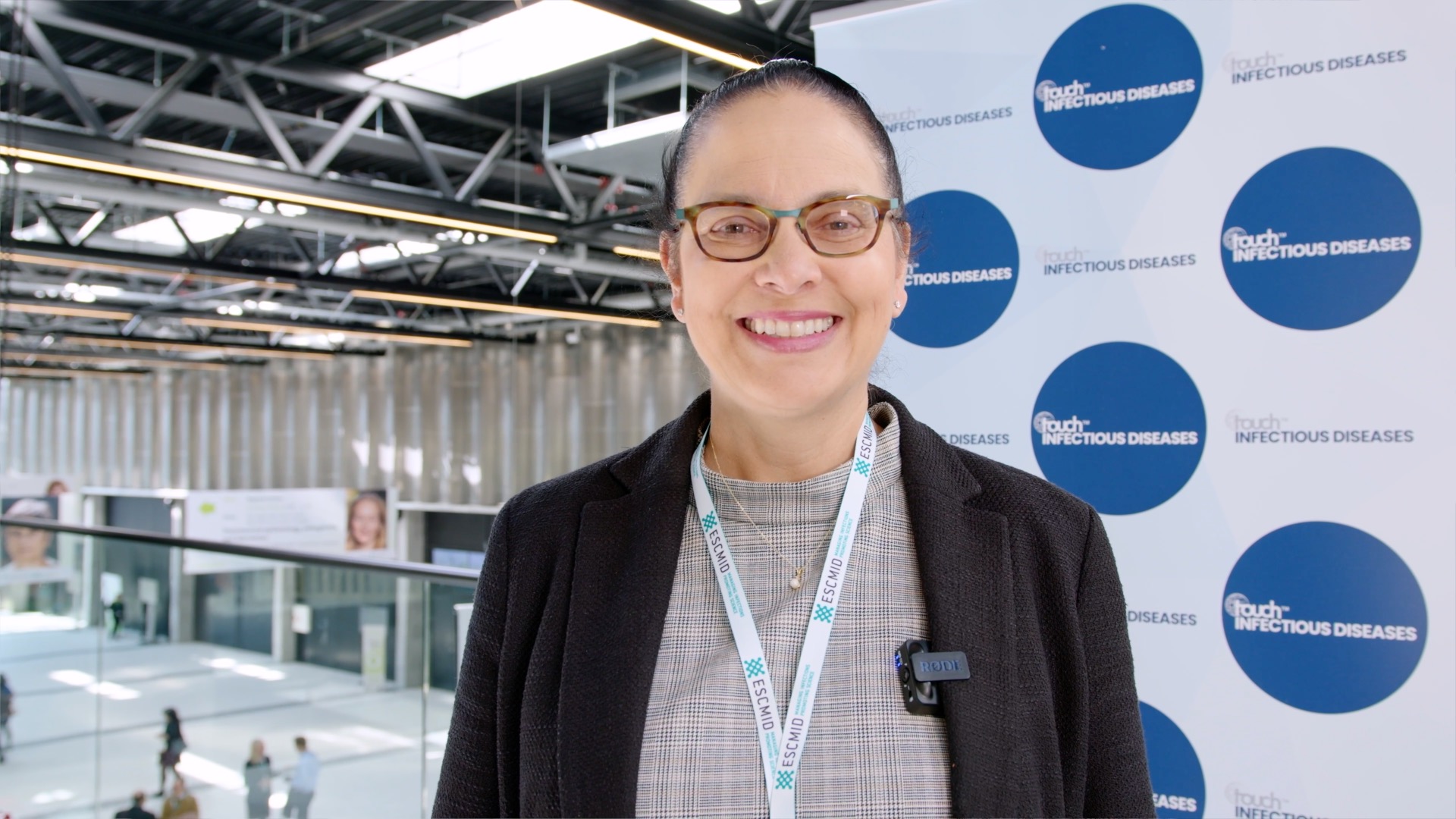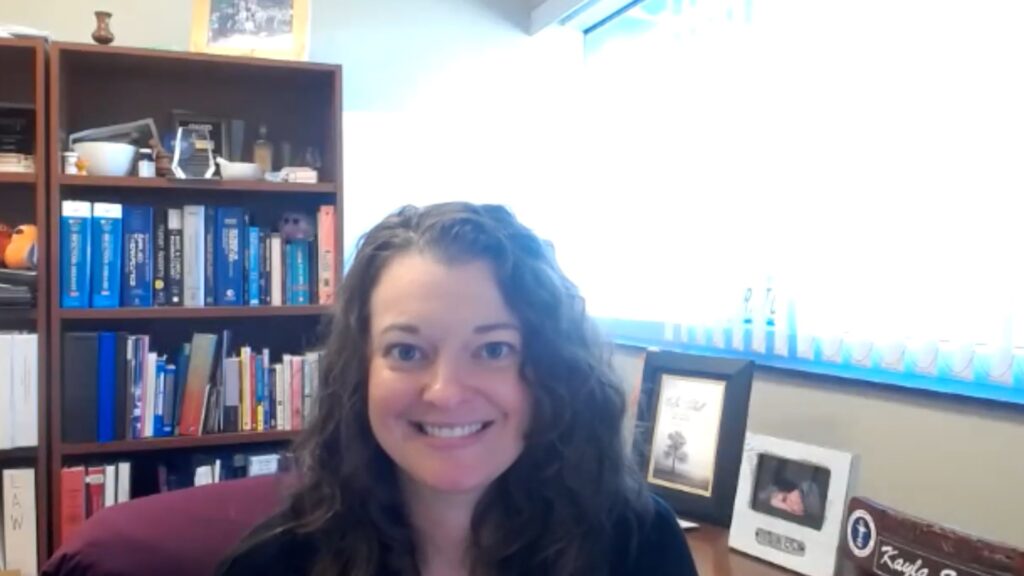Clostridioides difficile infection (CDI) is usually associated with older age; however, is becoming more prevalent in paediatric patients often in concurrence with comorbidities. There remains many unmet needs in the diagnosis and treatment of CDI in paediatric patients, with the mainstay of treatment being antibiotics.
touchINFECTIOUS DISEASES spoke with Dr. Anne J. Gonzales-Luna (University of Houston College of Pharmacy, Houston, TX, USA) to discuss the challenges in the diagnosis and treatment of CDI in paediatric patients, the current approach to management, the unmet needs in the development of new therapeutics and the impact the approval of fidaxomicin has had on the treatment paradigm.
The symposia ‘Current experience and future challenges in treatment of paediatric Clostridioides difficile infection.’ (Symposia number: SY052) was presented at ECCMID 2023, 15-18 April, 2023, Copenhagen, Denmark.
Questions
- Could you give us a brief overview of the current challenges in the diagnosis and treatment of Clostridioides difficile infection (CDI) in paediatric patients? (0:22)
- What comorbidities are thought to be linked to CDI in the paediatric setting? (1:37)
- What is the current approach to the management of CDI in children and how does this differ to that of adult patients? (2:12)
- Why is CDI in paediatric patients often overlooked in terms of new therapeutics? (3:11)
- How has the approval of fidaxomicin impacted the treatment paradigm in this indication? (3:52)
- What future challenges are associated with the management of CDI? (4:40)
Disclosures: Anne Gonzales-Luna discloses consulting for Ferrying Pharmaceuticals.
Support: Interview and filming supported by Touch Medical Media Ltd. Interview conducted by Katey Gabrysch and Victoria Jones.
Filmed in coverage of the 33rd European Congress of Clinical Microbiology & Infectious Diseases.
Click here for more content on bacterial infections & for further ECCMID 2023 highlights visit here.
Transcript
Could you give us a brief overview of the current challenges in the diagnosis and treatment of Clostridioides difficile infection (CDI) in paediatric patients? (0:22)
It’s a tricky area. I would say the biggest issue actually is the diagnosis. Kids are much more likely to be asymptomatically colonized with bacteria than adults are. And so a lot of the rapid diagnostics that have emerged like PCR or the multiplex PCR tend to pick up asymptomatic colonization as well. And so it’s really tough to actually get a good idea of what kids are actually infected with, the bacteria versus just carrying the bacteria. And that issue in diagnosis and misdiagnosis really kind of is a challenge across the entire spectrum of surveillance, treatment trials and enrolling and conducting clinical trials. And so I would say that is probably the biggest underlying issue. Just to touch on your question about challenges and the treatment is kind of, you know, when you have a clinical trial or you’re trying to study clinical outcomes, antibiotic efficacy in these kids, number one, it’s not as common in children as adults is around a tenth of the incidence that you’d see in adults. So it’s difficult to get large trials. And then once again, that misdiagnosis or potential for misdiagnosis really makes it difficult to kind of figure out what treatments may be best in these kids.
What comorbidities are thought to be linked to CDI in the paediatric setting? (1:37)
So this is an interesting question to you, and I don’t mean to sound redundant, but because of this risk of asymptomatic colonization, specifically pediatric populations that have malignancies or that have inflammatory bowel disease or IBD, have been linked with an increased risk for CDI, but they’re also more likely to be asymptomatically colonized. So it’s of this catch-22 of, you know, if one of those patient populations do get CDI, then they’re more likely to have bad outcomes. But at the same time, they’re also more likely to be one of those false positives we talked about.
What is the current approach to the management of CDI in children and how does this differ to that of adult patients? (2:12)
So the current approach per guideline recommendations, which came out in 2018, there’s IDSA guidelines for the US and European guidelines don’t really address pediatrics as explicitly. And the US still the mainstay of therapy is either metronidazole or vancomycin versus in adults, fidaxomicin is really kind of where the treatment paradigm is shift in the 2021 updates. Several international guidelines came out in 2021 that kind of emphasize fidaxomicin over vancomycin for adults, with the caveat also that when the pediatric guidelines were released in 2018, there were no trials of the fidaxomicin in children and there weren’t really get great comparative data of metronidazole versus vancomycin. So that’s why the guidelines kind of have a differing approach to where the evidence points today or kind of quickly then become outdated.
Why is CDI in paediatric patients often overlooked in terms of new therapeutics? (3:11)
So I think for new therapeutics, there’s certainly an issue once again with clinical trial enrollment and really kind of getting kids into these trials. I think also it’s widely appreciated that outcomes in children are not as severe as in adults. And so even though I just talked about fidaxomicin may be being preferred in adults, there’s still a large, large use of metronidazole in children. And that’s because most children do do well. And as I mentioned, you know, is that because they’re being misdiagnosed and they never had CDI to begin with or because they actually have some kind of greater resiliency to C. Diff, we don’t really know.
How has the approval of fidaxomicin impacted the treatment paradigm in this indication? (3:52)
So I kind of touched on that a little bit. So fidaxomicin was actually approved for pediatric grades aged six months or older back in 2020. I don’t as far as I know, there hasn’t been a lot of use. There’s not great publications on the use of fidaxomicin since 2020 as well. But I think it’s going to be interesting to see as that data does emerge, kind of came out, you know, during the pandemic. And so it’ll be a little bit interesting to see if that swayed providers to, you know, use for and just to kind of make sure they can do what they can to protect these kids or if there is going to be decreased fidaxomicin use or decreased use in general because it looks like incidence rates might have dropped during the pandemic.
What future challenges are associated with the management of CDI? (4:40)
Future challenges again fidaxomicin has the evidence now there’s a phase III randomized controlled trial for fidaxomicin in children versus vancomycin. So those are the two antibiotics we now actually have RCT data for in children. With that being said, there’s still a huge cost barrier to fidaxomicin use. And so I think that will be a challenge is kind of being able to balance where the evidence is. And what’s practical in a clinical setting. On top of that, in adults, we’re seeing this emergence of anti-recurrence strategies with LVPs in the US. And with bezlotoxumab that was approved back in 2016. We don’t have any data in children there. So although the adult treatment paradigm has kind of shifted to try to treat recurrence as a part of the initial issue in children, we’re still just, you know, going with antibiotics and hoping they get better by the end of the course.
Subtitles and transcript are autogenerated.











